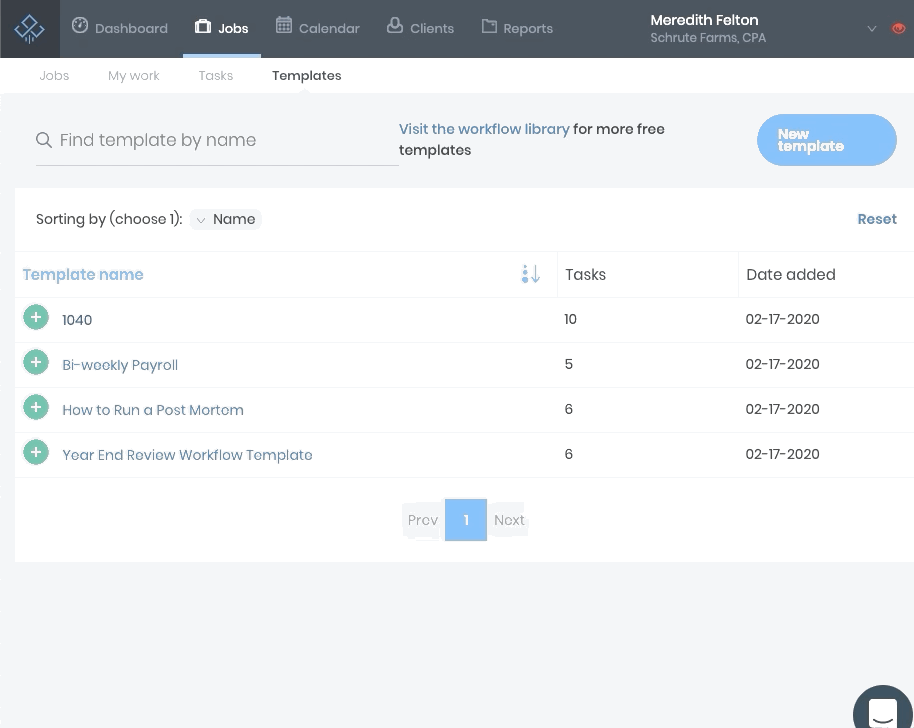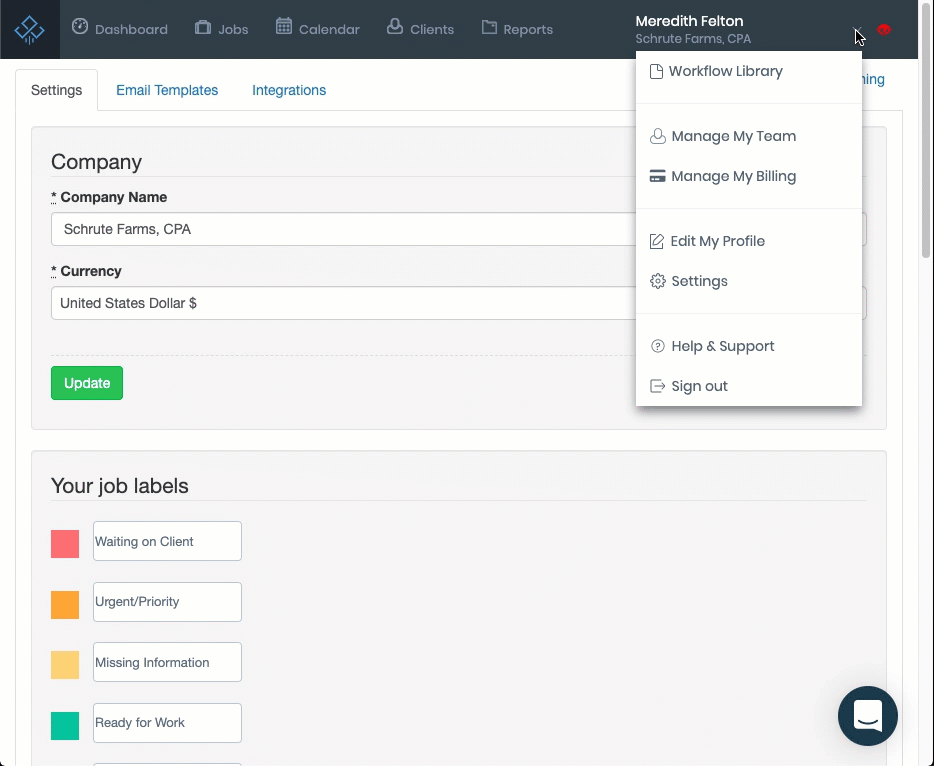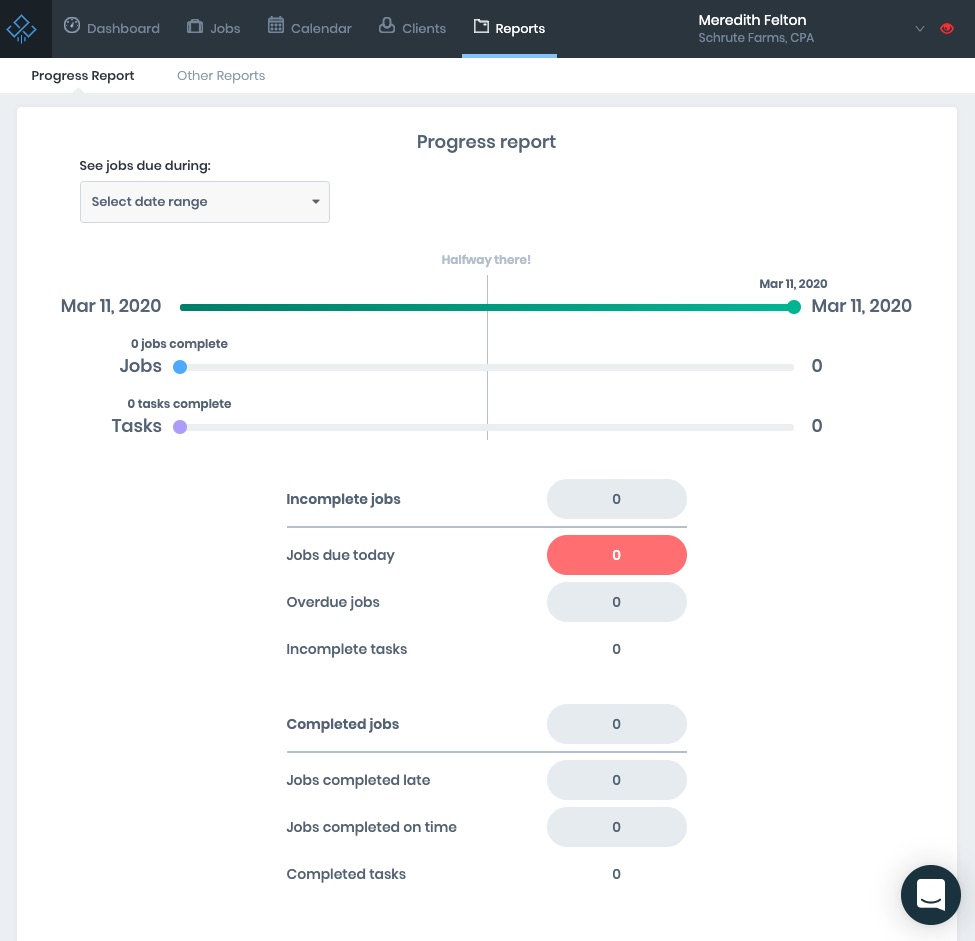5 Steps to Better Team Collaboration in Your Firm

“My team collaboration couldn’t be any better; it’s perfect!” – No One Ever.
Ok, so we might be tempted to say that because we really like each other and truly work well together. But there’s always room for improvement. Even the smartest and most educated teams with endless resources may not be great collaborators.
So what does it take to create a truly collaborative work environment?
What is Collaborative Work?
Collaborating in the workplace can look different for every team. Generally, collaborative work environments include any culture in which people are communicating well with each other toward a shared goal.
Sometimes this looks like a big brainstorm session with whiteboards and sticky notes all over the walls. Other times, it’s an email chain or Slack channel full of random ideas.

Whatever your collaboration work looks like, the key is that it involves more than just your own thoughts and actions to accomplish an objective.
Recipe: How to Successfully Work in Collaboration with Anyone
If you’re not sure where to start on your path to excellent collaborative work, you’ll need to start with a collective agreement about what this collaborative work environment looks like.
When you have a strong understanding of what your company’s values, mission, and vision are, then you can start to encourage your employees to use their strengths individually and as a team to achieve them.
1. Start with a heaping cup of mutual respect.
If your team feels respected by you and you by them, then you’re already off to an incredible start.
Some of the ways we love to show respect are through gift culture: we love Karmabot for Slack to send appreciation to each other for helping out, sending something uplifting to the group, or for celebrating their birthdays, anniversaries, etc.
We’re all human, so it’s unlikely that everyone gets along perfectly. But if asked, would your employees honestly say they feel respected by you and by each other? If not, know that you’re not alone, and pause first to learn how to establish respect and emotional safety in your team.
WARNING: This step cannot be skipped, or the other ingredients won’t make a difference in the overall recipe for collaborative working.
2. Add a few tablespoons of safe communication.
Continue to create space for open channels of communication, making a safe space for your team to ask questions and suggest ideas at any time.
If you’re the type who uses time blocking, you can hold open Office Hours at specific times throughout the week so your team knows exactly when they can drop in to ask questions or offer suggestions.
If you’re more flexible with your schedule, make sure you still prioritize this time, and make sure your team knows when you’re available. You can even host a standing meeting weekly with specific team members or groups of individuals to brainstorm. More on these standing meetings in Step 4.
3. Wait for the different personality types to rise.
To know how to work well with others, it’s important first to know who each person is, yourself included!
At Jetpack Workflow, we’re big fans of personality tests and learning more about what makes each of us unique. Along the way, we often find what makes us similar, which can solidify our understanding of why we work well together as a team.
We’ve found that diversity in thought processes, experiences, backgrounds, and interests are what make a team excel beyond all of their competition.
The simple act of sharing the results of a personality test is a great way to foster community and get to know your team better, but the result of knowing more about your colleagues’ strengths is a much stronger team.
Here are a few of our favorite tests for learning about our personality types:
Myers-Briggs
You have likely heard about the Myers-Briggs test, or even have your four-letter indicator memorized. This test includes four characteristics with two options for each.
For example, our team looks like an INFJ, ENTJ, ENFP, ISFP, three ESFJs, and a couple of ISFPs. And these are just the individuals who most recently took the test!
Free Option: The 16 Personalities Test isn’t an official Myers-Briggs assessment, but it’s a fun way to learn about the MBTI types.
Enneagram
Similar to Myers-Briggs, the Riso–Hudson Enneagram Type Indicator (RHETI) is a general way to describe your personality and preferences.
Among the nine Enneagram types, you’ll see both a dominant number and a “wing” number. The wing is one of the two numbers adjacent to your dominant number and describes additional characteristics that complete your indicator.
Free Option: A free Enneagram test like this can help you to define your predominant type and complementary wing.
DISC
How do you prefer to communicate with others? The DISC personality test is a classic way to determine the best ways for you to communicate with your team members. Knowing your own profile helps you to explain how you best receive information.
Free Option: This free DISC personality test is a quick way to learn about your basic profile.
Four Tendencies
What motivates you to act? Gretchen Rubin literally wrote the book on motivation types in the Four Tendencies.
She also created a free Four Tendencies quiz to explain your why: why you do or do not choose to do something.
Kolbe Index
There are multiple paid tests you can take to learn about your Kolbe Assessment, which dives into the natural and instinctive characteristics that make you an awesome addition to any team. We’d recommend starting with Assessment A to get a good understanding of your individual index.
Free Option: Check out their team collaboration survey and see which of the three types of teams defines your team.
4. Mix in a handful of regular check-ins.
Leaving your door open is an important first step in maintaining excellent collaborative communication, and the next step is to intentionally set regular touch points with individuals and the whole company.
One-on-Ones
You’d be hard-pressed to find a bunch of people who never want feedback except for once in an annual review. This is where regular one-on-one meetings come in. One-on-ones are not only for updates on progress but also for professional development and fostering a personal relationship. There are endless formats for a great one-on-one meeting, but the key element is to allow your employee to run the conversation, as it’s about their work and needs.
We love taking our one-on-one meetings outside of the office by sharing a coffee, either in person or over video chat. This sets the tone to be softer and relieves pressure for what can feel overwhelming to many people when they’re expecting to receive positive, negative, or neutral feedback about their performance.
Company-Wide Updates
Along with individual conversations, it’s critical to regularly update your whole team about company-wide progress and goals. These meetings can happen as frequently as a weekly email, a monthly or quarterly meeting, or a yearly state-of-the-union style address.
Whatever frequency you choose, remember to open the conversation with a focus on your employees as individual humans. No matter what news you have to present, reminding them that you see them as valuable to your vision and mission is never a bad idea.
Continuing Education and Professional Development
One of the best investments you can make in your business is to invest in the education and professional development of everyone in your company.
Bringing in experts for continuing education credit lunch-and-learns is a great first step, and often necessary for upkeep of licenses, but think outside of the box about learning opportunities. Have you been reading valuable books, listening to podcasts, or taking courses related to your industry? Share these resources regularly with your team, and offer financial assistance for any paid programs you find exceptionally useful.
Just Fun
Please don’t overlook this: Setting aside time that’s 100% dedicated to fun and relaxed, natural conversation among your team is critical. This purely fun time like happy hours, team lunches, coffee chats, team retreats, and outings are the glue that keep the humanity of your company together.
Knowing that there will be a balance of work and play brings peace to each person and makes the mission and vision toward which you’re all working feel much more achievable.
5. Sprinkle some collaborative tools on top, and enjoy!
By now, you’ve likely been introduced to, or have used, many cloud-based tools that make your life easier. Have you considered how they can also shape your collaborative work style?
Chat Tools
If you mainly communicate with your employees via email, consider trying out free chat tools like Slack. Slack serves as both a simple and quick way to check in on progress and a fun way to personalize your conversations with individuals and groups of people on your team.
Don’t forget to take initiative on making conversations fun, though. As with every other part of your company culture, your team will take cues on what’s appropriate or not from you, their leader. Be thoughtful about how you can create a safe and fun environment in chat tools so your team knows what’s humorous and fun vs. what’s off-limits.
Video Conferencing
Whether your team is all in one room together, spread out in a building, or scattered remotely throughout the world, it’s always helpful to have access to video conferencing tools like Zoom, Google Hangouts, or Skype.
If you want to add some spice to your video calls, you can use filters like Snap Camera or start the meetings off with an [actually fun] icebreaker question or game. Some teams even start their meetings with a dance party to get their heart rates up, minds focused, and tension released.
Project Management
For the best visibility of your employees’ progress on tasks and projects, communicate through a company-wide workflow software like Jetpack Workflow.
If you’re new to a project management tool, you can make the setup process collaborative by assigning a champion for collecting any data you need to upload to the tool and another champion for learning tips and tricks in the system (using Loom to record for the team).
Take the time to learn how the tool can be used differently by different individuals. Once everyone is comfortable in the system, ask them to share how they personalized their views or processes.
Collaborative Work Environments are Successful Work Environments
This is by no means an exhaustive list of all tactics for fostering good team work; share with us the tips and tricks you use!





























